Imo Mochi is a Japanese dish made from potatoes that can be enjoyed as a side dish or a snack. You can experience the flavor of potatoes with a slightly chewy texture in two main ways: savory or sweet.
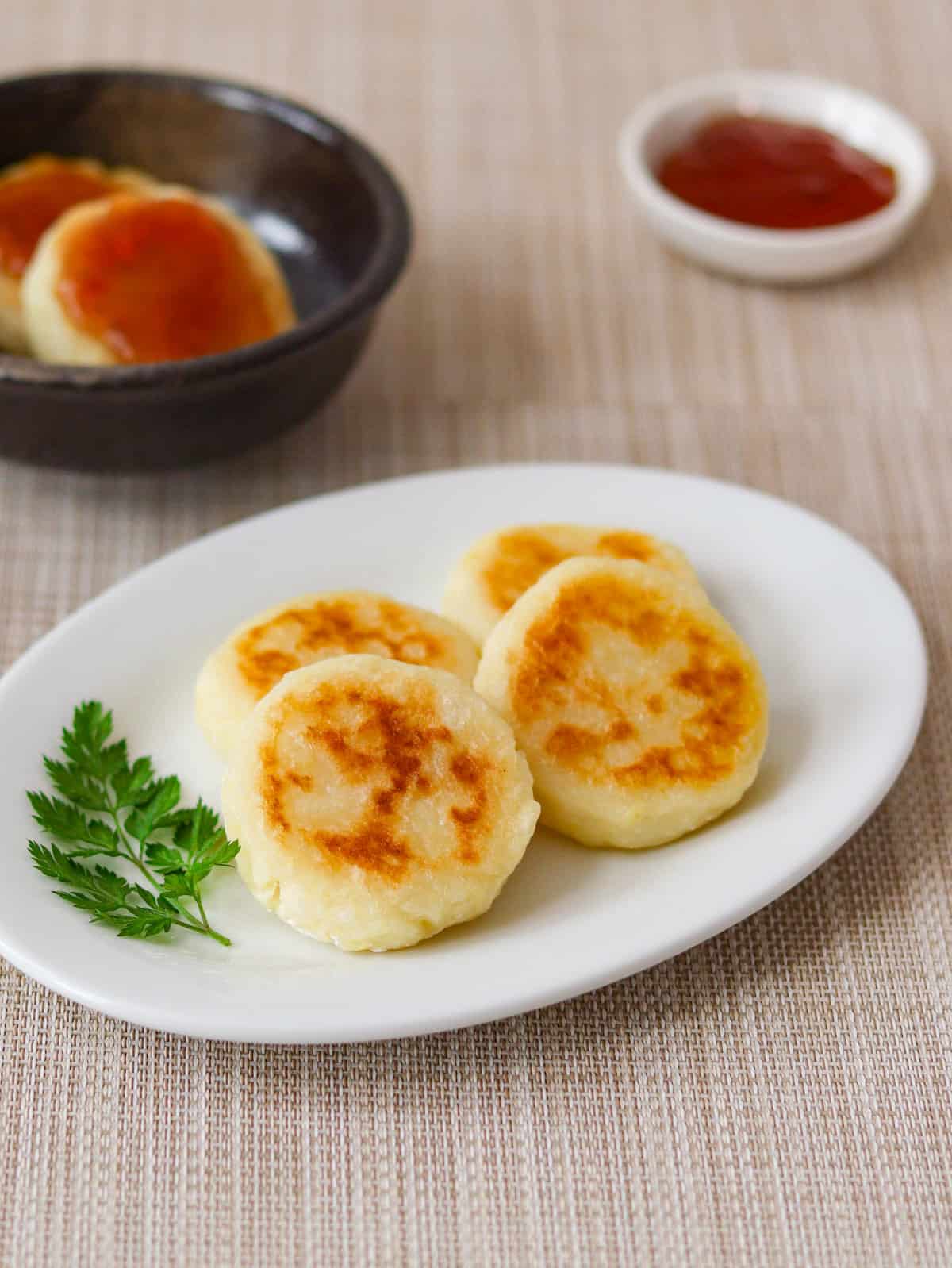
Jump to:
What is Imo Mochi?
Imo Mochi is a dish made by sautéing mashed potatoes formed into circles after steaming or boiling them. "Imo" is short for 'jagaimo,' which means potatoes, and "Mochi" refers to Japanese rice cakes. Although it doesn't contain mochi as an ingredient, this dish is known as 'imo mochi' because its slightly chewy texture resembles that of mochi. It is sometimes called 'imo dango' due to its shape, which resembles Japanese rice dumplings.
Originally a local dish in Hokkaido, it is now enjoyed throughout Japan. The seasoning varies depending on the region and household, and it can be enjoyed as a side dish with a salty taste or as a snack with a sweet soy sauce glaze. Both variations are delicious, so I encourage you to try them and find your preference.
By the way, there are regional dishes with the same name in Ehime, Wakayama, Kochi, and Gifu prefectures in Japan, but they are mainly made with ingredients such as Japanese sweet potatoes (satsumaimo) or taro, which are different from the imo mochi commonly recognized in Japan.
What type of potatoes are suitable?
There are many different types of potatoes, but when making imo mochi, the potatoes need to be mashed, so it is best to use starchy potatoes that break down easily. For instance, in Japan, "Danshaku potatoes (男爵イモ)" are recognized as a suitable choice, while in the United States, "Russet potatoes" are a good option. Consider using starchy potatoes that are readily available in your local area whenever possible.
Exploring the sweet soy glaze
The sauce used for enjoying this dish as a snack is a sweet soy glaze, which embodies the characteristic sweetness of Japan. It is mainly made from sugar and soy sauce and has a subtle thickness. This flavor is familiar to Japanese people and is also used in traditional Japanese sweets like Mitarashi Dango (Japanese rice dumplings with sweet soy glaze).
So, once you have enjoyed this dish with the sweet soy glaze and found it to your liking, I highly recommend trying Mitarashi Dango next. It will surely become another favorite of yours.
Other variations
In addition to the recipe shared on this page, you can enjoy imo mochi in various ways, such as by adding cheese or using kabocha squash instead of potatoes, known as "Cheese Imo Mochi" and "Kabocha Mochi," respectively. Both variations offer a unique twist compared to regular imo mochi, so be sure to give them a try.
If you add cheese, reduce the amount of salt in the recipe by half and skip the sweet soy glaze. When making kabocha mochi, you can simply replace the potatoes with kabocha.

📋Step-by-step recipe
Ingredients
- 0.7 lb potatoes (preferably a starchy variety, such as Russet)
- 3 Tbsp potato starch or corn starch
- 3 Tbsp water (for the starch)
- ½ tsp salt* (* not necessary if you plan to serve the dish with a sweet soy glaze)
Sweet soy glaze:
- ½ Tbsp potato starch or corn starch
- ½ Tbsp water (for the starch)
- 2 Tbsp sugar
- 1 Tbsp soy sauce
- 3 Tbsp water
Instructions
🕒 Total: 35 minsIf you plan to enjoy this dish as a salty side, skip steps 6 and 7. If you want to enjoy it as a sweet snack, skip adding the salt.
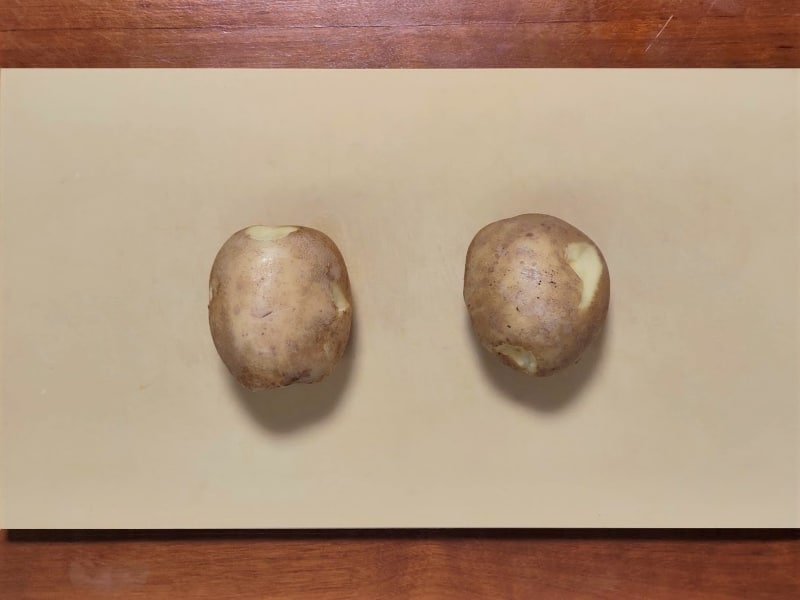
Step 1
Wash potatoes and remove any eyes.
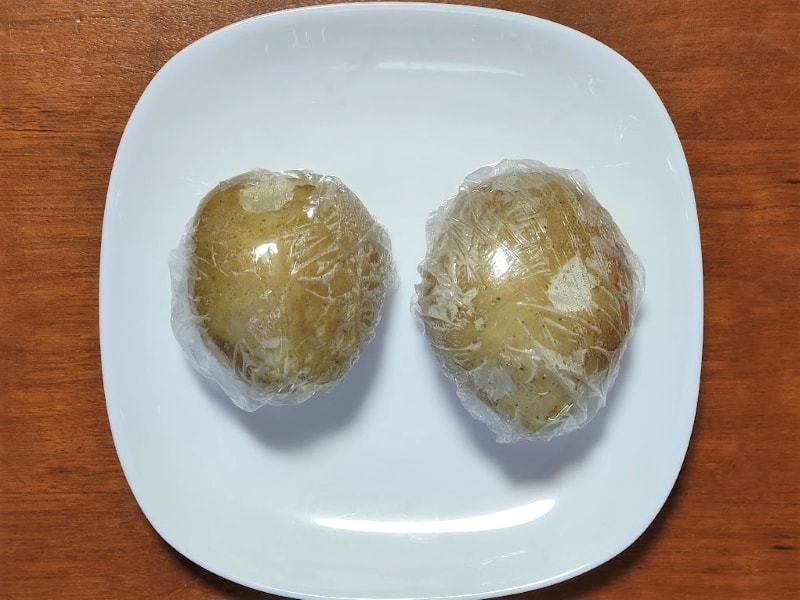
Step 2
Wrap each potato individually in plastic wrap and place them on a microwave-safe plate. Microwave the potatoes on high power (1000W) until tender, about 3-6 minutes (depending on the number and size of the potatoes).
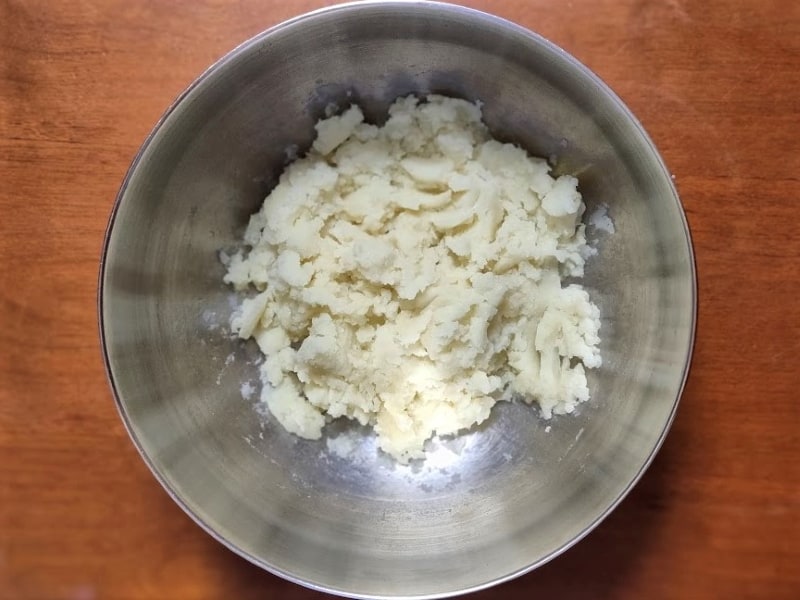
Step 3
Remove the plastic wrap from the potatoes and let them cool until they are easy to handle. While the potatoes are still warm, peel off the skins and put them in a bowl. Mash them with a fork, potato masher, or pestle until smooth.
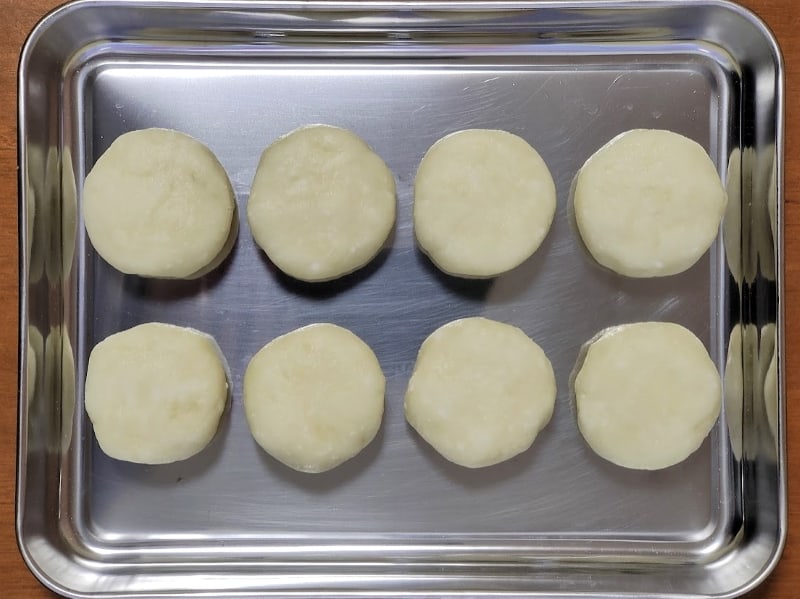
Step 4
Mix the starch with water in a small bowl until smooth. Add the dissolved starch and salt to the bowl (salt is not necessary if you plan to serve this dish with a sweet soy glaze), mix well, and shape the mixture into ⅘ inch (2 cm) thick rounds, about 1.4 oz (40 g) each.
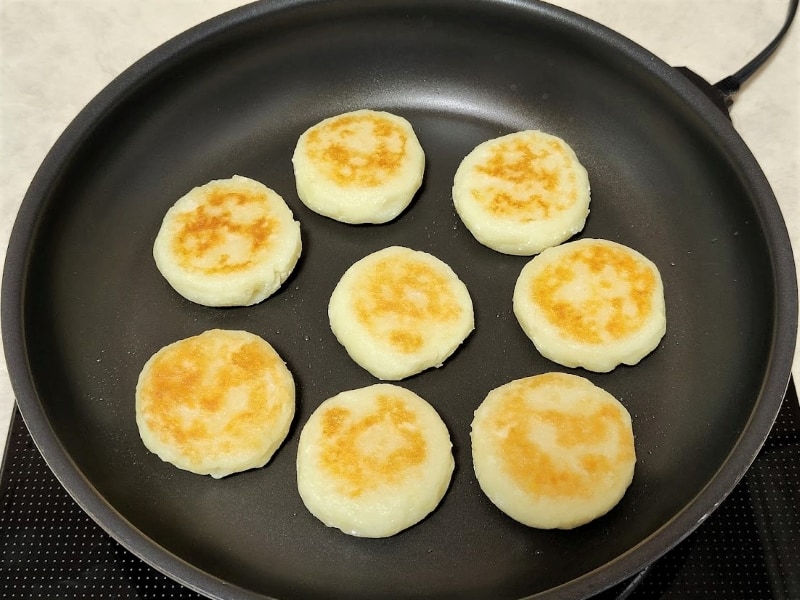
Step 5
Heat oil in a pan and cook the shaped potatoes over medium heat until browned on both sides.
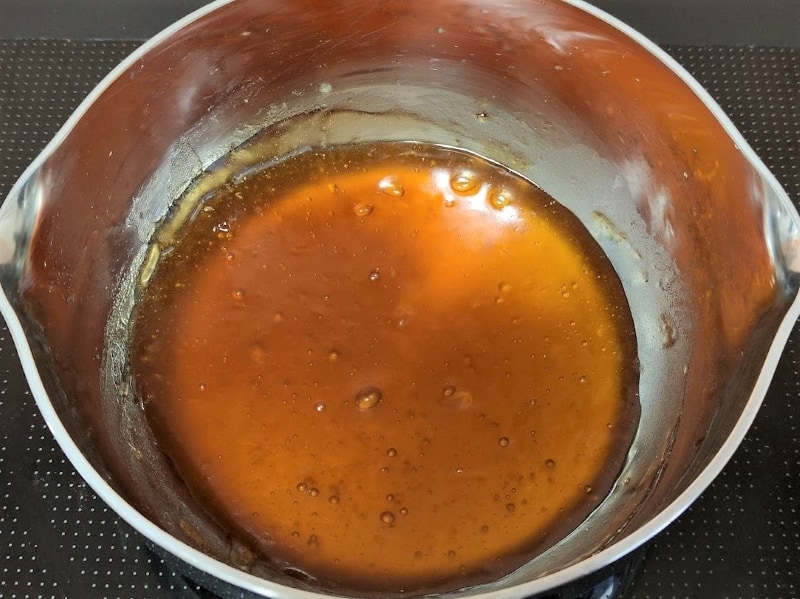
Step 6 (For the sweet soy glaze)
Mix the starch with water in a small bowl until smooth. In a small pot, combine sugar, soy sauce, and water, and bring it to a gentle boil over low heat. Gradually add the dissolved starch to the pot while stirring constantly to thicken it and avoid lumps. Continue simmering for about 20 seconds to eliminate any powdery taste.
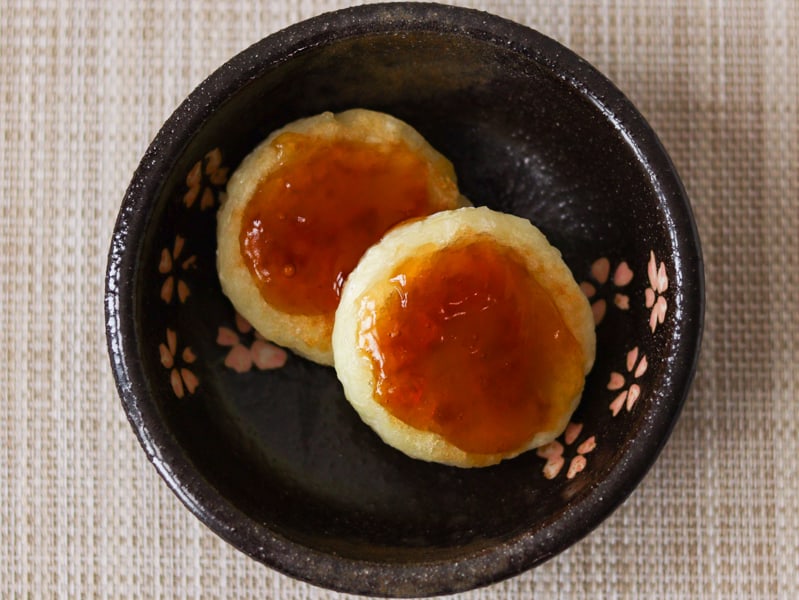
Step 7 (To serve with the sweet soy glaze)
Serve on plates and drizzle with the glaze.
To store
After cooking, it is recommended to consume it as soon as possible, as its texture may deteriorate over time. If it remains uncooked, it can be stored in the refrigerator for up to 3 days without a change in texture.
Tips on how to make
- Cook the potatoes until they are tender. This recipe suggests microwaving them, but you can also steam or boil them if you prefer.
- Mash the potatoes while they are still warm. Once they cool, they will become hard and difficult to shape.
If you try this recipe, I’d love to hear what you think. Please consider leaving a review and star rating in the comments below. If you enjoyed it, I’d really appreciate it if you shared it with your friends.
Recipe card
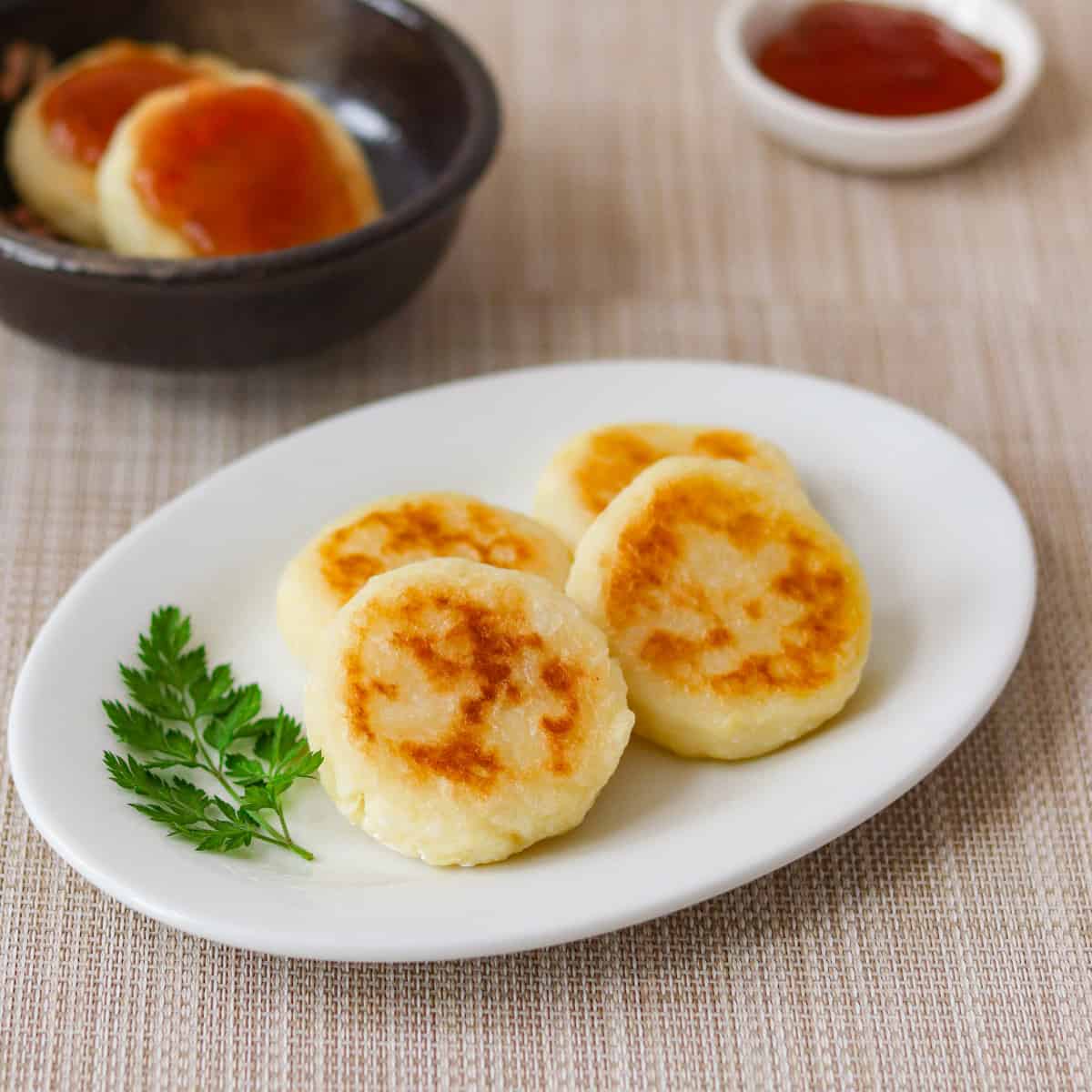
Imo Mochi (Potato Mochi)
Ingredients
- 0.7 lb potatoes (preferably a starchy variety, such as Russet)
- 3 Tbsp potato starch or corn starch
- 3 Tbsp water (for the starch)
- ½ tsp salt* (* not necessary if you plan to serve the dish with a sweet soy glaze)
Sweet soy glaze:
- ½ Tbsp potato starch or corn starch
- ½ Tbsp water (for the starch)
- 2 Tbsp sugar
- 1 Tbsp soy sauce
- 3 Tbsp water
Instructions
- Wash potatoes and remove any eyes.
- Wrap each potato individually in plastic wrap and place them on a microwave-safe plate. Microwave the potatoes on high power (1000W) until tender, about 3-6 minutes (depending on the number and size of the potatoes).
- Remove the plastic wrap from the potatoes and let them cool until they are easy to handle. While the potatoes are still warm, peel off the skins and put them in a bowl. Mash them with a fork, potato masher, or pestle until smooth.
- Mix the starch with water in a small bowl until smooth. Add the dissolved starch and salt to the bowl (salt is not necessary if you plan to serve this dish with a sweet soy glaze), mix well, and shape the mixture into ⅘ inch (2 cm) thick rounds, about 1.4 oz (40 g) each.
- Heat oil in a pan and cook the shaped potatoes over medium heat until browned on both sides.
- (For the sweet soy glaze) Mix the starch with water in a small bowl until smooth. In a small pot, combine sugar, soy sauce, and water, and bring it to a gentle boil over low heat. Gradually add the dissolved starch to the pot while stirring constantly to thicken it and avoid lumps.
- (To serve with the sweet soy glaze) Serve on plates and drizzle with the glaze.
Notes
- If you plan to enjoy this dish as a salty side, skip steps 6 and 7. If you want to enjoy it as a sweet snack, skip adding the salt.
- After cooking, it is recommended to consume it as soon as possible, as its texture may deteriorate over time. If it remains uncooked, it can be stored in the refrigerator for up to 3 days without a change in texture.


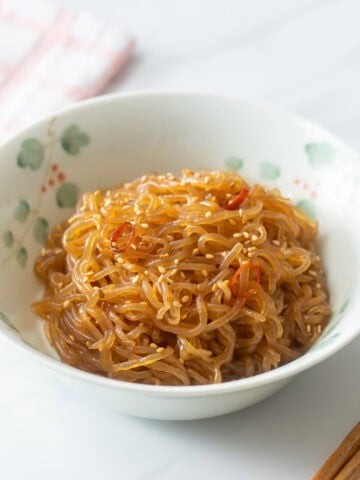
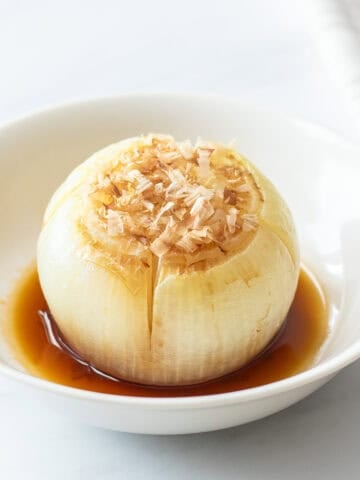

Leave a Rating and a Comment